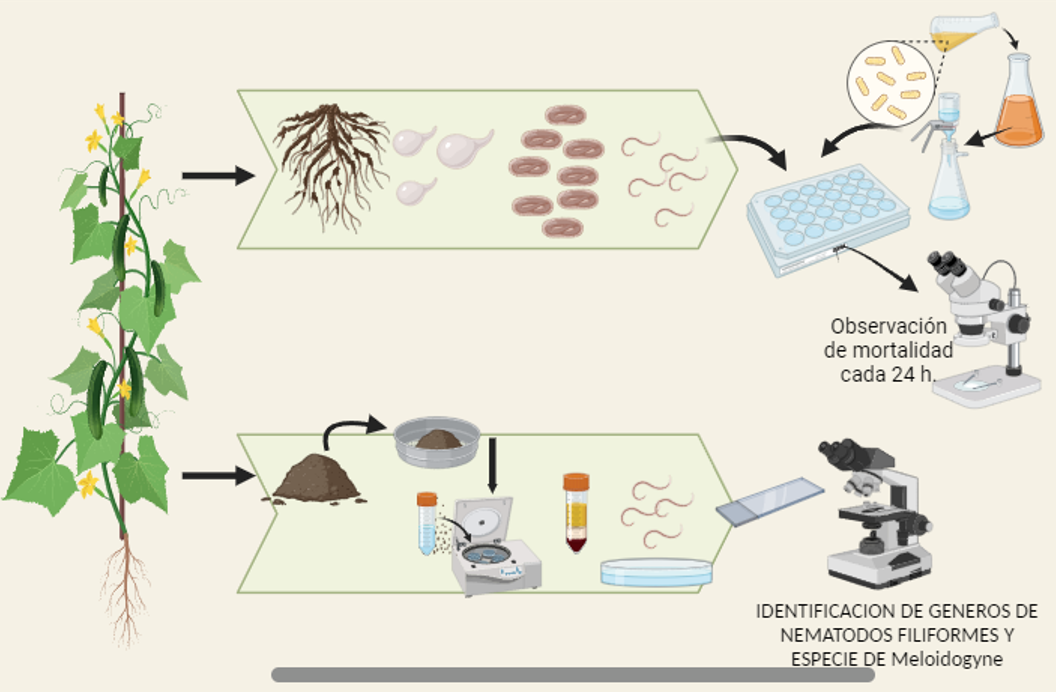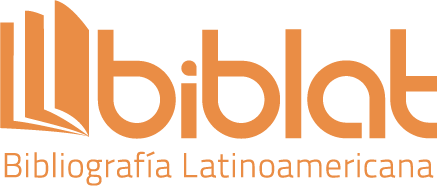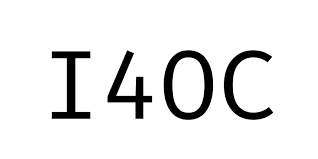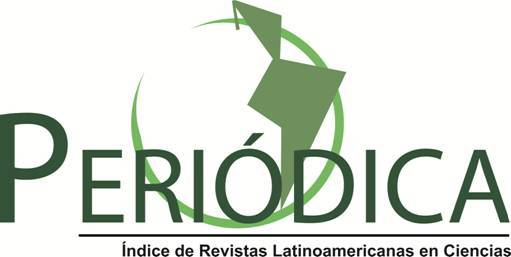Nematodos asociados al cultivo de pepino (Cucumis sativus) y efecto de rhizobacterias promotoras de crecimiento sobre Meloidogyne incognita (Tylenchida: Heteroderidae)
DOI:
https://doi.org/10.18633/biotecnia.v26.2143Palabras clave:
Bacillus vallismortis, Bacillus velezensis, Control biológico, Nematodo agallador, Pseudomonas fluorescensResumen
Se analizaron muestras de suelo y raíces del cultivo del pepino. Se extrajeron e identificaron los nematodos fitopatógenos presentes. Juveniles de Meloidogyne incognita fueron los más abundantes en suelo, otros como Aphelenchoides sp., Pratylenchus sp., Tylenchorynchus sp., y Aphelenchus sp. se encontraron con menor presencia. De las raíces se obtuvieron hembras y huevos de M. incognita. Con el fin de encontrar alternativas a los productos químicos fumigantes utilizados en exceso, se evaluaron las rizobacterias Bacillus vallismortis, Bacillus velezensis y Pseudomonas fluorescens, que fueron fermentadas y filtradas para ponerse en contacto con estos nematodos bajo condiciones in vitro, observando su efecto cada 24 h. Los tratamientos se analizaron en concentraciones de 100% y 50%. El filtrado de P. fluorescens presentó la mejor actividad nematicida, ocasionando una mortalidad de 95% en la concentración más alta y de 93 % en la concentración de 50 % a las 24 h, seguido por los tratamientos de B. vallismortis y B. velezensis con 83 y 77 % de respectivamente, en las concentraciones más altas. Los tres tratamientos ocasionaron un 100 % de mortalidad de los nematodos a 48 h de exposición, indicando, que contienen acción nematicida y pueden ser una alternativa viable para el control de estos fitopatógenos.
Descargas
Citas
Araya, M., Centeno, M., y Carrillo, W. 1995. Densidad poblacional y frecuencia de los nematodos parásitos de banano (Musa AAA) en nueve cantones de Costa Rica. Costa Rica. Corbana 20(43):6 – 11.
Baldwin, J. G., Nadler, S. A., Adams, B. J. 2004. Evolution of plant parasitism among nematodes. Annu Rev Phytopathol. 42:83-105. doi: 10.1146/annurev.phyto.42.012204.130804. PMID: 15283661.
Cohn, F. 1872. Untersuchungen über Bakterien. Pages 127-224 in: Beiträge zur Biologie der Pflanzen 1, 1875 (Heft 1), J. U. Kern’s Verlag (Max Müller), Breslau. Recuperado de https://www.biodiversitylibrary.org/page/5105059#page/2/mode/1up.
Collange, B., Navarrete, M., Peyre, G., Mateille, T., Tchamitchian. 2011. Rootknot nematode (Meloidogyne) management in vegetable crop production: the challenge of an agronomic system analysis. Crop Protection 30(10), 1251–1262.
Condemarin, Carlos. 2018. Efecto de bacterias nativas del suelo cultivado y prístino sobre el control del nematodo agallador radicular, Meloidogyne javanica. en condiciones in vitro y producción de bioma-sa. Arnaldoa, 25(2), 515-528.doi:10.22497/arnaldoa.252.25211.
Cronin, D., Moënne-Loccoz and Dunne, C. 1997. Inhibition of egg hatch of the potato cyst nema-tode Globodera rostochiensis by chitinase-producing bacteria. European Journal of Plant Pathology,103, 433–440. doi:10.1023/A:1008662729757
Dowling D. N. and O'Gara F. 1994. Metabolites of Pseudomonas involved in the biocontrol of plant disease.Trends Biotechnol.12(4)133-144. doi:10.1016/0167-7799(94)90091-4
Eisenback, D.J., Hirschmann, H., Sasser, N.J. y Triantaphyllou, C.A. 1983. Guía para la identificación de las cuatro especies más comunes del nematodo agallador (Meloidogyne especies), con una clave pictórica. International Meloidogyne Project. Raleigh, North Carolina, USA.
EPPO. 2017. PM 3/83 (1) Fragaria plants for planting inspection of places of production. Bulletin OEPP/ EPPO. Bulletin. 43(3),471-495. doi: 10.1111/epp.12408.
Frankland, G. C. and Frankland, P. F. 1887. Studies on some new micro-organisms obtained from air. Philosophical Transactions of the Royal Society of London. B, 178, 257–287.
Flügge C. 1886. Die Mikroorganismen. 2. Aufl. 692 Verlag von F. C. W. Vogel, Leipzig
Gupta, R. C., Miller Mukherjee I. R., Doss R. B., Malik J. K. and Milatovic D. 2017. Organophos-phates and Carbamates. Reproductive and Developmental Toxicology (2), Academic Press, 609-631.
Haas and Defago, G. 2005. Biological control of soil-borne pathogens by fluorescent pseudo-monads. Nat Rev Microbiol,3(4),307–319. doi:10.1038/nrmicro1129.
Hajihassani, A. Davis, R. Timper, P. 2019. Evaluation of Selected Nonfumigant Nematicides on Increasing Inoculation Densities of Meloidogyne incognita on Cucumber. Plant Dis. (12) 3161-3165. doi: 10.1094/PDIS-04-19-0836-RE.
Handoo, Z.A. Khan, A. Islam, S. 2007. A key and diagnostic compendium to the species of the ge-nus Merlinius Siddiqi, 1970 (Nematoda:Tylenchida) with description of Merlinius khuzdarensis n.sp. associated with datepalm Nematology, 9(2),251–260.
Idowu, J. Rotifa, Kenneth A. Evans. 2021. Use of acibenzolar-S-methyl and other novel products for the management of Aphelenchoides fragariae on ornamental plants in glasshouse and commercial conditions. Crop Protection, 141. doi: 10.1016/j.cropro.2020.105467
Jones J. G., Kleczewski N. M., Desaeger J., Meyer S. F. L. 2016. Evaluation of nematicides for southern root-knot nematode management in lima bean. Crop Protection, 96,151-157.
Kaur, P.K., Joshi, N., Singh, I.P., and Saini, H.S. 2017. Identification of cyclic lipopeptides pro-duced by Bacillus vallismortis R2 and their antifungal activity against Alternaria alternata. J Appl Microbiol,122(1),139–152. doi: 10.1111/jam.13303.
Keel, C., Schnider, U., Maurhofer, M., Voisard, C., Laville, J., Burger, U., Wirthner, P., Haas, D., De´fago, G. 1992. Suppression of root diseases by Pseudomonas fluorescens CHA0: importance of the bacterial secondary metabolite 2,4-diacetylphloroglucinol. Molecular Plant– Microbe Interac-tion 5(1), 4–13.
Kohl, L. 2011. Foliar Nematodes: A Summary of Biology and Control with a Compilation of Host Range. Plant Health Progress 12(1), 23. doi:10.1094/php-2011-1129-01-rv
Liu, X. Y., Wang, B. J., Jiang, C. Y., and Liu, S. J. 2007. Micrococcus flavus sp. nov., isolated from activated sludge in a bioreactor. International journal of systematic and evolutionary Microbiolo-gy, 57(1), 66-69. doi:10.1099/ijs.0.64489-0
Liu Y., Teng, K., Wang, T., Dong, E., Zhang, M., Tao, Y., Zhong, J. 2020. Antimicrobial Bacillus velezensis HC6: production of three kinds of lipopeptides and biocontrol potential in maize. J Appl Microbi-ol.128(1):242-254. doi: 10.1111/jam.14459.
Machado, A.C.Z., Dorigo, O.F., Mattei, D. 2013. First Report of the Root Knot Nematode, Meloidogyne inornata, on Common Bean in Paraná State, Brazil. Plant Disease, 97(3), 431-431.
Mai, W. F.; Mullin, P. G.; Lyon, H.H.; and Loeffler, K. 1996. Plant-parasitic nematodes. A Pictorial Key to Genera. Cornell University Press. Nueva York. 277.
Maung, E.C.H., Choi, T.G., Nam, H.H., Kim, K.Y. 2017. Role of Bacillus amyloliquefaciens Y1 in the Control of Fusarium Wilt Disease and Growth Promotion of Tomato. Biocontrol Sci. Technol. 27, 1400–1415 doi:10.1080/09583157.2017.1406064
McNear Jr., D. H. 2013. The rhizosphere - roots, soil and everything in between. Nat. Educat. Knowledge 4 (3):1.
Migula W. 1895. "Bacteriaceae (Stabchenbacterien)." In: Engler and Prantl (Editors), Die Naturlichen Pflanzenfamilien. W. Engelmann, Leipzig, 20-30.
Montes–Belmont, R. 2002. Nematología vegetal en México. Sociedad Mexicana de Fitopatología. Sonora, México. 98 p
Ongena, M., Jacques, P. 2008. Bacillus lipopeptides: Versatile weapons for plant disease biocon-trol. Trends Microbiol,16, 115–125. doi: 10.1016/j.tim.2007.12.009. PMID: 18289856.
Ornat, C., Verdejo-Lucas, S., Sorribas. F.J. 1997. Effect of the previous crop on population densi-ties of Meloidogyne javanica and yield of cucumber. Nematropica (27), 85– 90.
Podile, A. R., Kishore, G. K. 2007. Plant growth-promoting rhizobacteria. In S.S. Gnanamanickam (Ed.) Plant-associated bacteria. Springer, Dordrecht,195–230. doi: 10.1007/978-1-4020-4538-76.
Prasad, S., Tilak, K., and Gollakota, R. 1972. Role of Bacillus thuringiensis var. thuringiensis on the larval survivability and egg hatching of Meloidogyne. spp. The causative agent of root-knot disease. Journal of Invertebrate Pathology, 20. 377-378
Priest, F. G., Goodfellow, M., Shute, L. A., & Berkeley, R. C. W. (1987). Bacillus amyloliquefa-ciens sp. nov., nom. rev. International journal of systematic and evolutionary microbiology, 37(1), 69-71. doi:10.1099/00207713-37-1-69.
Radwan, M., Farrag, S., Abu-Elamayem, M., Ahmed, N. 2012. Biological control of the root-knot nematode, Meloidogyne incognita on tomato using bioproducts of microbial origin. Applied Soil Ecology. 56, 58-62, doi: 10.1016/j.apsoil.2012.02.008.
Ravichandra N. G. 2014. Horticultural Nematology. Springer India, 411. doi: 10.1007/978-81-322-1841-8.
Roberts, M., Nakamura, L., Cohan, F. 1996. Bacillus vallismortis sp. nov., a close relative of Bacil-lus subtilis isolated from soil in Death Valley, California. Int J Syst Bacteriol. 46 (2),470–5.doi:10.1099/00207713-46-2-470.
Ruiz-García, C., Bejar, V., Martinez-Checa, F., Llamas, I., Quesada, E., 2005; Bacillus velezensis sp. nov., a surfactant-producing bacterium isolated from the river Velez in Malaga, southern Spain. Int J Syst Evol Microbiol. 55:191–5. doi:10.1099/ijs.0.63310-0.
Sánchez-Monge, A., Flores, L., Salazar, L., Hockland, S.H., Bert, W. 2015. An updated list of the plants associated with plant-parasitic Aphelenchoides (Nematoda: Aphelenchoididae) and its implications for plant-parasitism within this genus. Zootaxa, 4013 (2), 207-24. doi: 10.11646/zootaxa.4013.2.3
Santos, M., Nogueira, M., Hungria, M. 2019. Microbial inoculants: reviewing the past, discussing the present and previewing an outstanding future for the use of beneficial bacteria in agriculture. AMB Express 9,205. doi: 10.1186/s13568-019-0932-0.
Servicio de Información Agroalimentaria y Pesquera. SIAP. (2023). Anuario Estadístico de la Producción Agrícola. Recuperado de https://nube.siap.gob.mx/cierreagricola/
Siddiqi, R. 2000. Tylenchida: Parasites of plants and insects. CAB International. Londres. 848 p.
Siddiqui, I. A., and S. S. Shaukat. 2003. Plant species, host age and host genotype effects on Meloidogyne incognita biocontrol by Pseudomonas fluorescens strain CHA0 and its genetical-ly-modified derivatives. Journal of Phytopathology,151(4),231-238.
Théatre, A., Cano-Prieto, C., Bartolini, M., Laurin, Y., Deleu, M., Niehren, J.; Fida, T., Gerbinet, S., Alanjary, M., Medema, M.H. 2021. The surfactin-like lipopeptides from Bacillus spp.: Natural biodiver-sity and synthetic biology for a broader application range. Front. Bioeng. Biotech-nol,2(9),623-701. doi: 10.3389/fbioe.2021.623701.
Tian, X., Zhao, X., Zhao, S., Zhao, J., Mao, Z. 2022. The Biocontrol Functions of Bacillus velezen-sis Strain Bv-25 Against Meloidogyne incognita. Front Microbiol ,7(13),843. doi: 10.3389/fmicb.2022.843041.
Villain, L., Anzueto, F., Hernández, A., Sarah, J. 1999. Los nematodos parásitos del cafeto. En: Desafios de la caficultura en Centroamérica. (pp. 327-367). Francia. 496 p Editorial: B. Bertrand y B. Rapidel. CIRAD.
Wang G. L., Chen X. L., Chang Y. N., Du D., Li Z. and Xu X. Y. 2015. Synthesis of 1,2,3-benzotriazin-4-one derivatives containing spirocyclic indoline-2-one moieties and their nematicidal evaluation. Chinese Chemical Letters, 26(12), 1502-1506. doi: 10.1016/j.cclet.2015.10.024
Yeates, G. 1999. Effects of plants on nematode community structure. Ann Rev Phytopathol. 37(1):127-149. doi:10.1146/annurev.phyto.37.1.127.
Zasada, I. A., Walters, T. W. y Pinkerton, J. N. 2010. Post-plant nematicides for the control of root-lesion nematode in red raspberry. HortTechnology 20:856–862.
Zhao, Z., Wang, Q., Wang, K., Brian, K., Liu, C., Gu, Y. 2010. Study of the antifungal activity of Bacillus vallismortis ZZ185 in vitro and identification of its antifungal components. Bioresour Tech-nol.101(1):292-7. doi: 10.1016/j.biortech.2009.07.071. Epub 2009 Aug 29. PMID: 19717300.

Archivos adicionales
Publicado
Cómo citar
Número
Sección
Licencia
Derechos de autor 2023

Esta obra está bajo una licencia internacional Creative Commons Atribución-NoComercial-CompartirIgual 4.0.
La revista Biotecnia se encuentra bajo la licencia Atribución-NoComercial-CompartirIgual 4.0 Internacional (CC BY-NC-SA 4.0)















_(2).jpg)








